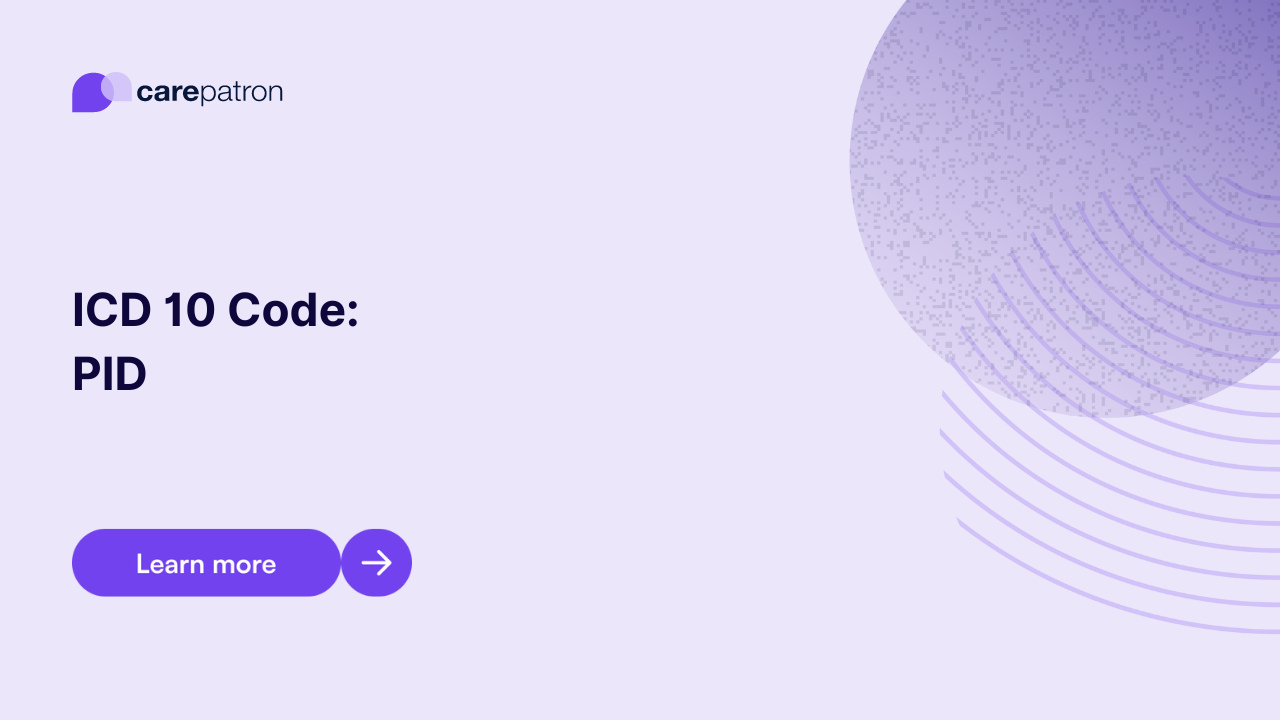
What PID ICD-10 codes can I use?
If you’re looking for PID ICD codes, please note that there are no ICD-10 codes that mention PID in their names. Instead, they spell the whole thing out: Pelvic Inflammatory Disease.
Here are a few ICD-10 codes that you can use:
- N73.9 - Female pelvic inflammatory disease, unspecified
This ICD-10 code is meant to be used on a female patient confirmed to have a Pelvic Inflammatory Disease.
It comes with an unspecified label, which means the specific disease is not specified or identified. Once you’ve identified the specific disease, please use a more specific ICD-10 code.
- A18.17 - Tuberculous female pelvic inflammatory disease
This ICD-10 code is meant to be used if the pelvic inflammatory disease emerges from a Tuberculosis infection from a male partner.
- A54.24 - Gonococcal female pelvic inflammatory disease
This ICD-10 code is meant to be used if pelvic inflammatory disease emerges due to Neisseria gonorrhoeae bacteria in the reproductive organs.
- A56.11 - Chlamydial female pelvic inflammatory disease
This ICD-10 code is meant to be used if pelvic inflammatory disease emerges due to Chlamydia trachomatis bacteria in the reproductive organs.
- Z87.42 - Personal history of other diseases of the female genital tract
This ICD-10 code can be used on a female patient if it’s confirmed they’ve had a history of pelvic inflammatory disease.
Are these PID ICD-10 codes billable?
Yes. All of the ICD-10 codes for PID listed above are valid and billable.
Clinical information about PID:
Pelvic Inflammatory Disease, or PID for short, is a disease that emerges due to a bacterial infection in a woman’s reproductive organs like the uterus, fallopian tubes, and ovaries. These bacterial infections are often sexually transmitted (though sometimes they can be caused by bacteria in the vagina), and the disease emerges if these infections aren’t treated on time and well.
This disease should be treated as soon as possible because it can lead to the following complications if left untreated for too long or if not treated effectively:
- Infertility
- The emergence of abscesses
- Ectopic pregnancies
- Chronic pelvic pain
Those who have Pelvic Inflammatory Disease will likely have the following symptoms:
- Abnormal vaginal discharge (the discharge has an unusual odor and color)
- Pain during sexual intercourse
- A burning sensation when urinating
- Pain in the lower abdomen
- Having irregular period cycles
- Fever
- Nausea
Synonyms include:
- Female pelvic inflammatory disease
- Female pelvic inflammatory disease caused by Mycoplasma genitalium
- Mycoplasmal pelvic inflammatory disease
- Female tuberculous pelvic inflammatory disease
- Chronic pelvic inflammatory disease
- Female gonococcal pelvic inflammatory disease
- Chlamydial pelvic inflammatory disease
- PID ICD 10
- ICD 10 code for PID
- ICD 10 PID
- Acute PID ICD 10
- ICD 10 code for PID due to sexually transmitted chlamydia

Commonly asked questions
Examples of non-sexually transmitted causes include childbirth, miscarriages, undergoing pelvic surgery, and the insertion of an intrauterine device in the uterus.
No. Despite this, they can carry the bacteria that can cause PID and transfer them during sexual intercourse.
Practice safe sex and get checked for sexually transmitted infections regularly.

.jpg)
